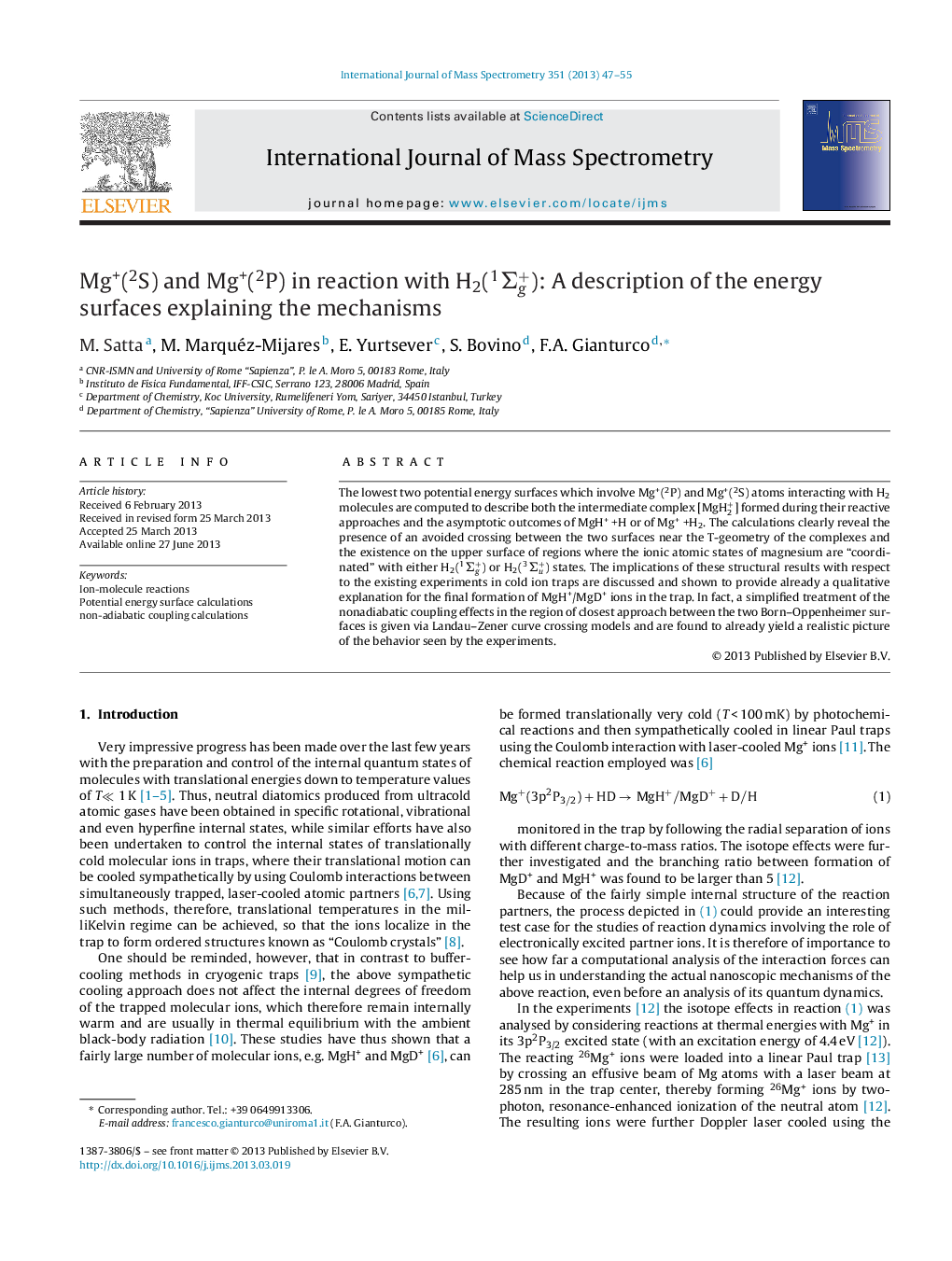| کد مقاله | کد نشریه | سال انتشار | مقاله انگلیسی | نسخه تمام متن |
|---|---|---|---|---|
| 1192574 | 1492275 | 2013 | 9 صفحه PDF | دانلود رایگان |

• Ion molecule reaction guided by non adiabatic transitions.
• Intermediate complex formation with hydrogen triplet state.
• Exothermic product channels with MgH+ formation.
• Ab initio potential energy surfaces.
• Non adiabatic Landau–Zener dynamics at crossing.
The lowest two potential energy surfaces which involve Mg+(2P) and Mg+(2S) atoms interacting with H2 molecules are computed to describe both the intermediate complex [MgH2+] formed during their reactive approaches and the asymptotic outcomes of MgH+ + H or of Mg+ + H2. The calculations clearly reveal the presence of an avoided crossing between the two surfaces near the T-geometry of the complexes and the existence on the upper surface of regions where the ionic atomic states of magnesium are “coordinated” with either H2(1Σg+) or H2(3Σu+) states. The implications of these structural results with respect to the existing experiments in cold ion traps are discussed and shown to provide already a qualitative explanation for the final formation of MgH+/MgD+ ions in the trap. In fact, a simplified treatment of the nonadiabatic coupling effects in the region of closest approach between the two Born–Oppenheimer surfaces is given via Landau–Zener curve crossing models and are found to already yield a realistic picture of the behavior seen by the experiments.
Figure optionsDownload high-quality image (96 K)Download as PowerPoint slide
Journal: International Journal of Mass Spectrometry - Volume 351, 1 October 2013, Pages 47–55